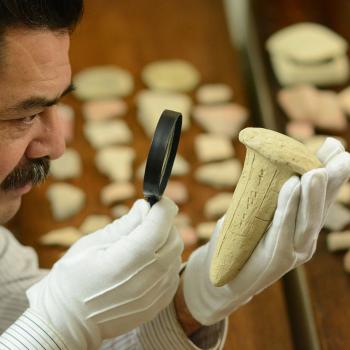How do you break free from trauma? That’s not an easy question to answer, nor an easy thing to do. It’s like trying to break free from a prison cell.
Before trying to offer an answer to the question, it would be good to define “trauma.” The American Psychological Association defines “trauma” in this way:
Trauma is an emotional response to a terrible event like an accident, rape or natural disaster. Immediately after the event, shock and denial are typical. Longer term reactions include unpredictable emotions, flashbacks, strained relationships and even physical symptoms like headaches or nausea. While these feelings are normal, some people have difficulty moving on with their lives. Psychologists can help these individuals find constructive ways of managing their emotions.
The ability to break free from trauma and move on with one’s life involves cultivating resilience. What is “resilience”? The APA defines “resilience” along the following lines:
Resilience is the process of adapting well in the face of adversity, trauma, tragedy, threats or significant sources of stress — such as family and relationship problems, serious health problems or workplace and financial stressors. It means “bouncing back” from difficult experiences.
The APA offers recommendations on how to cultivate resilience. Here they are: “make connections;” “avoid seeing crises as insurmountable problems;” “accept that change is a part of living;” “move toward your goals;” “take decisive actions;” “look for opportunities for self-discovery;” “nurture a positive view of yourself;” “keep things in perspective;” “maintain a hopeful outlook;” “take care of yourself;” and be creative by considering other ways to build resilience, such as through written reflection, and spiritual and meditative exercises.
In what follows, I will consider a few of these recommendations, as I meditate on the Apostle Paul’s experience during his first imprisonment in Rome. Paul experienced a great deal of trauma in his life. Jesus even went so far as to tell Ananias in the context of Paul’s conversion story that he would show Paul (Saul) how much he would suffer for Jesus’ sake (Acts 9:16). Later in life, Paul reflected back on the considerable amount of suffering for Jesus he endured (See 2nd Corinthians 11:16-33). The list included horrible beatings, imprisonments, hunger, various dangers including shipwrecks and betrayals, as well as angst over the church’s many struggles.
We get a glimpse of some of Paul’s trauma during his imprisonment in Rome, which he wrote about in his letter to the Philippian church. Not only was he imprisoned, but also false brothers tried to cause him even more affliction during his captivity (Philippians 1:15-17). Talk about adding insult to injury! If I were in Paul’s shoes or sandals (in the midst of all the other trials he endured), I might have been tempted to give up on life. Paul was not made of steel, or even tin. He did despair of life itself at least on one occasion (See 2nd Corinthians 1:8), and yet he kept on going. He became increasingly resilient in the midst of his traumatic trials.
While Paul did not break from his imprisonment in Rome, he did break free from trauma imprisoning his soul, mind, and emotions. In three ensuing blog posts, I will discuss ways in which Paul overcame trauma during his imprisonment in Rome. My hope is that such meditations on Paul’s spirituality will assist us in our efforts to break free from various forms of trauma and cultivate resilience.
The Institute for Cultural Engagement: New Wine, New Wineskins will be hosting “Trauma and Resilience,” an interdisciplinary and multi-dimensional conference, Saturday, March 18th at Multnomah University and Multnomah Biblical Seminary in Portland, Oregon. You can find information about the conference here at this link. Please join us!













